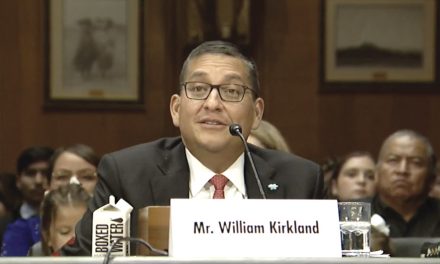
50 Years Ago: Tribal workers get a retirement plan
Fifty years ago last week, the Navajo Times reported that members of the Navajo Tribal Council, during a special session, discussed approving a retirement plan for tribal employees.
It seems that the discussion was brief and Council members didn’t go into details; it only needed more discussion. Well, the Navajo Times did some investigating and what they found out was eye-opening, to say the least.
The talk about a retirement plan had begun early in 1969 when a representative of the Standard Life and Insurance Co. of Oklahoma City approached tribal officials and presented the idea of a tribal retirement program to show employees how the government appreciated their service.
This being the start of an election season, the idea of approving a program that would show support of a major voting block probably seemed like a good idea. The insurance salesman said it wouldn’t cost the tribe a lot of money to make it a reality – less than $10,000 annually for the first two years.
Dick Hardwick, the editor of the Times, wrote an editorial that week urging members of the Council to revisit the issue as soon as possible because a lot of tribal employees had 20 or more years under their belts.
But something happened shortly after that issue of the paper hit the newsstands. Hardwick was given a copy of the proposed retirement plan, probably from a member of the Council, and his views on the matter changed.
It turned out that the reason for the low cost was because of the payout. Employees who retired after 20 years of service would be entitled to retirement pay of $15 a month. For those reaching 30 years, it would rise to $20 a month.
This was at a time when most tribal employees were making between $3,000 and $4,500 a year. Just that week, the tribe had hired a new attorney to work with its general counsel, Harold Mott, at a salary of $9,000 a year.
Hardwick pointed out that the average federal retirement pay was about $178 a month at the age of 65 so the tribal portion would still not bring it to $200 a month, which, in 1969, didn’t provide retirees a very good income to live on.
“A man couldn’t buy much more than bread and beans on that kind of offering,” he said in an editorial published the following week.
He said the tribe should seek other proposals from other companies and bring them in to talk with the Council as soon as possible. This would mean that the tribe would have to come up with some serious money to pay for a plan but, given the sacrifices that tribal employees had had to make over the years, it would be money well spent.
It would take more than a year but shortly after Peter MacDonald took office, the Council approved a plan that would provide the average employee more than $80 a month after 20 years.
Employees would become vested in the program after four years. Later a new plan was devised for political appointees because they could not participate in the program and the person who appointed them was only in office for one term.
For those individuals, the tribe eventually approved what became known as the deferred compensation plan. A sum equal to 10 percent of their salary would be set aside for them when they left the tribe.
If an appointee made between $7,000 and $10,000 a year, which was probably the average back in the 70s, they could look at a payout of as much as $4,000 after four years of working for the tribe.
The Times this week also gave readers an update on a story published a couple of weeks before.
This was the story of a Chicago policeman who arrested a hippy because he had a bumper sticker on his car which said “Ts’ililzei Doo’da,” which the police officer thought was some kind of slang for a protest.
It turned out that the man had visited the Navajo Reservation that summer and picked up the bumper sticker at the Navajo Tribal Museum, which was selling them for $1 each. The bumper sticker loosely translated to “Do not litter.”
Someone at Sports Illustrated had somehow seen a copy of that story and it was published in that week’s issue of the magazine.
But what made the story even more interesting was that Carl Cordes, a member of the local Plateau Science Society, had seen that same bumper sticker over a bar in Alaska, which he had visited.
It seems that the bartender also spent his summer vacation in the Southwest and picked up the bumper sticker when he visited the reservation.
He became so enamored with the saying that he began offering his customers a drink named after that Navajo phrase.
The drink was made out of Fresca, brandy and grenadine. Cordes told Hardwick that he ordered it and said, “It packs a powerful wallop,” similar to that of drinking a “Twister.”
He also reported that the bartender, who operated the Yukon Bar in Seward, would tell his customers that even if they could not pronounce the name of the drink, they should buy it anyway.








 Highway 264,
Highway 264, I-40, WB @ Winslow
I-40, WB @ Winslow